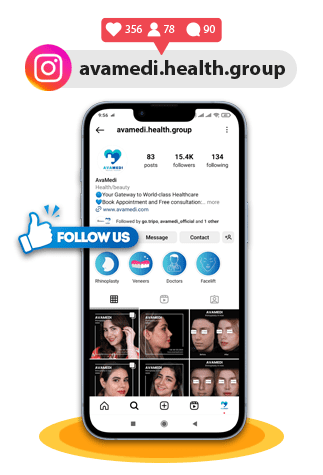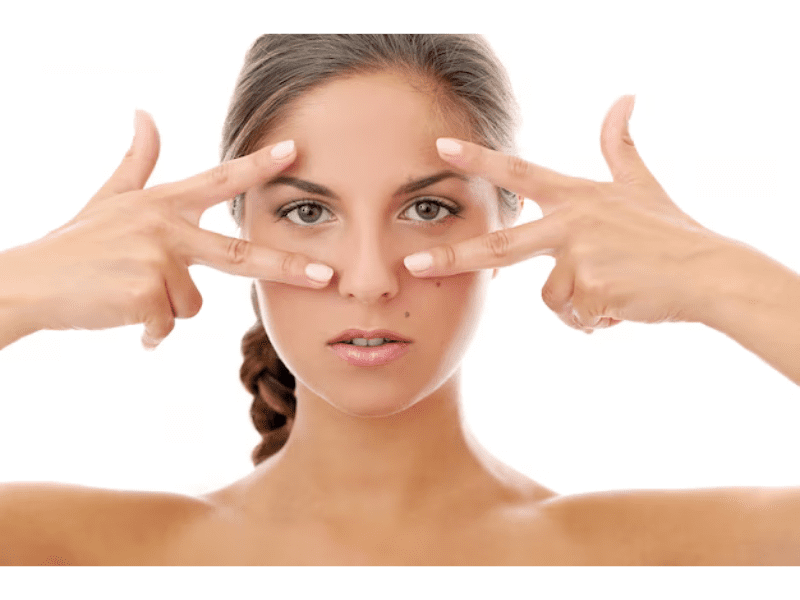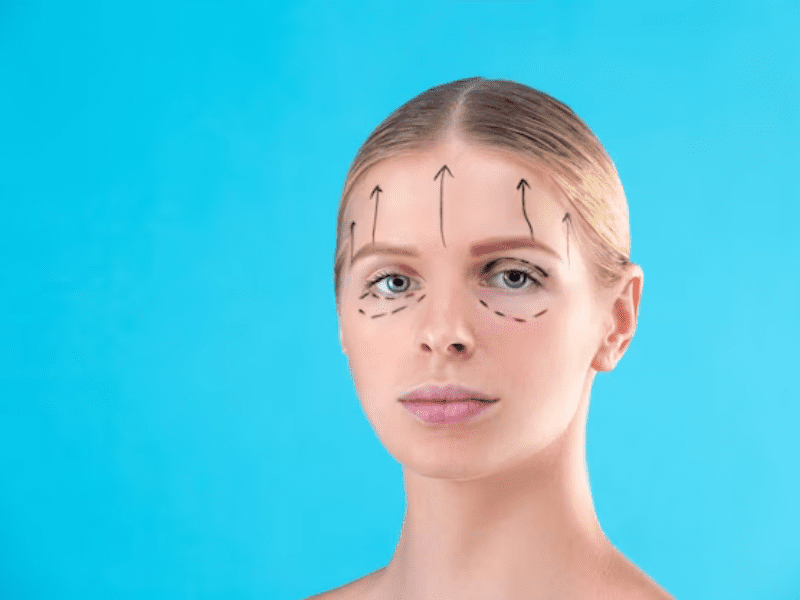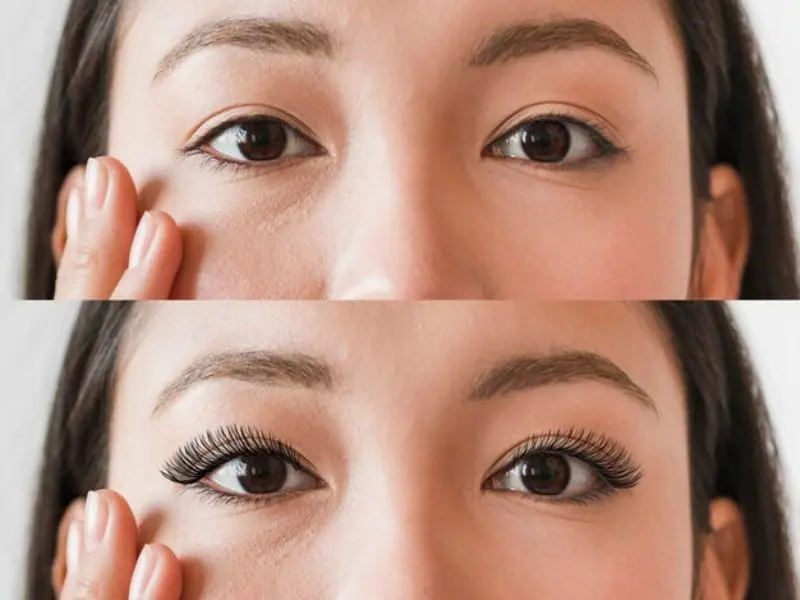Double eyelid surgery (Asian blepharoplasty)
Double eyelid surgery, also known as Asian blepharoplasty, is a cosmetic surgical procedure aimed at creating a supratarsal crease (double eyelid) in individuals who do not naturally possess it. This procedure is popular among some East Asian individuals who have a monolid (a single eyelid without a crease) and desire a crease on their upper eyelids for aesthetic purposes.
The surgery involves making an incision on the upper eyelid to create a new crease or fold, allowing for the appearance of a double eyelid. Surgeons may employ various techniques, including full incision, partial incision, or non-incisional methods, depending on the patient’s anatomy and desired outcome.
It’s important to note that while this surgery is common, it’s a personal choice, and the decision to undergo it should be carefully considered. Cultural perceptions, societal standards of beauty, and individual preferences all play a role in deciding whether to pursue this procedure. Consulting with a qualified plastic surgeon who specializes in eyelid surgery is crucial to understanding the procedure, potential risks, recovery process, and expected outcomes.
Avamedi offers multiple other services such as Eyelid Surgery in Iran and Double eyelid surgery.
What Is Double Eyelid?
A double eyelid refers to the presence of a distinct crease or fold on the upper eyelid that creates a visible separation between the eyelid and the area below the eyebrow. This crease is characterized by a natural fold that appears when the eye is open, creating an indentation or line above the lash line.
Not everyone naturally has a double eyelid; some individuals have what’s known as a monolid, where there is no visible crease on the upper eyelid when the eyes are open. Double eyelids are more common among people of European descent, but they can also be found in individuals of Asian descent or other ethnic backgrounds.
In cosmetic surgery, double eyelid surgery or Asian blepharoplasty is a procedure to create or enhance the crease on the upper eyelid for aesthetic purposes. This surgery is popular in certain Asian cultures where a double eyelid is considered a beauty standard.
What are the benefits of Double eyelid surgery correction?
Double eyelid surgery, or Asian blepharoplasty, aims to create a supratarsal crease (double eyelid) where one is not naturally present. The benefits of this surgery, which vary among individuals, often include:
- Enhanced Eye Appearance: The primary goal is to create a defined upper eyelid crease, which can make the eyes appear larger, more alert, and brighter. This can contribute to a more youthful and refreshed look.
- Improved Symmetry: For individuals with asymmetrical eyelids or uneven creases, double eyelid surgery can help create balance and symmetry between the eyes, enhancing overall facial harmony.
- Personal Confidence: Many people undergo this surgery to boost their self-confidence and self-esteem. Feeling more satisfied with their appearance can positively impact one’s self-perception and interactions with others.
- Makeup Application: Having a defined eyelid crease can make applying eye makeup easier and more versatile, allowing for a wider range of makeup styles and techniques.
- Long-Term Results: When performed by a skilled surgeon, double eyelid surgery can lead to permanent or long-lasting results, providing a lasting change in the appearance of the eyelids.
Double eyelid surgery risks
Double eyelid surgery, like any surgical procedure, carries potential risks and complications. Some specific risks associated with double eyelid surgery (Asian blepharoplasty) include:
- Bleeding and Infection: There’s a risk of bleeding during or after the surgery. Infections at the incision sites are possible, although they are relatively uncommon.
- Scarring: Incisions are made along the upper eyelid to create the double eyelid crease. While efforts are made to minimize scarring, visible scarring along the incision line might occur. The appearance of scars can vary among individuals.
- Asymmetry: Achieving perfect symmetry between the eyelids can be challenging. Despite the surgeon’s efforts, the creases might end up slightly different in height, shape, or symmetry.
- Unexpected Results: The final appearance after surgery might not align with the patient’s expectations. Factors such as individual healing, skin elasticity, and anatomical variations can influence the outcome.
- Swelling and Bruising: Swelling and bruising around the eyes are common after surgery and usually subside within a few weeks. However, in some cases, they might persist longer.
- Difficulty Closing the Eyes Completely: In rare cases, changes in the eyelid anatomy due to surgery might lead to difficulty fully closing the eyes or altered blinking patterns.
- Eye Dryness or Irritation: Changes in eyelid anatomy or post-operative swelling can cause temporary dryness, irritation, or discomfort in the eyes.
- Numbness or Sensitivity: Temporary numbness or altered sensation around the surgical area might occur, which usually resolves over time as the tissues heal.
- Revision Surgery: In some cases, patients might require additional surgery to adjust or refine the results or address any complications that arise.
To minimize these risks, it’s crucial to choose a skilled and experienced plastic surgeon who specializes in eyelid surgery. Comprehensive pre-operative discussions, understanding the potential risks, following post-operative care instructions diligently, and realistic expectations are essential for a successful outcome.
What is Non-incision Double Eyelid Surgery?
Non-incision double eyelid surgery is a technique used to create a double eyelid without making external incisions on the eyelid. Unlike traditional double eyelid surgery, which involves making incisions to create a crease, non-incisional methods utilize alternative approaches to achieve the desired double eyelid appearance.
The non-incisional technique typically involves the use of sutures or threads to create the double eyelid fold. This procedure is sometimes referred to as “suture” or “thread” double eyelid surgery. Here’s an overview of how it works:
- Suture Placement: Instead of making external incisions, small punctures are made on the inner surface of the eyelid. Fine sutures or threads are then inserted through these punctures.
- Creating the Crease: The sutures or threads are strategically placed to form a temporary or semi-permanent fold in the eyelid. By adjusting the tension of the sutures, the surgeon can create the desired double eyelid appearance.
- Healing and Results: Over time, the tissues of the eyelid may adhere to the sutures, helping to maintain the crease. However, unlike incisional methods, the results of non-incisional techniques may be less permanent and could potentially revert to the original eyelid appearance over time.
Non-incisional double eyelid surgery is often chosen for its minimally invasive nature, faster recovery time, and reduced risk of scarring compared to traditional incisional methods. However, the results may vary from person to person, and the longevity of the created crease might not be as long-lasting as with incisional procedures.
What Causes Different Types of Eyelids?
Different types of eyelids, such as single eyelids (monolids) or double eyelids, are primarily determined by anatomical variations in the structure of the upper eyelid and the presence or absence of a crease. These variations can be influenced by a combination of genetic, ethnic, and developmental factors.
Here are some factors contributing to different types of eyelids:
-
Genetics:
- The presence or absence of a crease (double eyelid) can be an inherited trait. Some individuals naturally inherit a double eyelid from their parents, while others might have single eyelids. Genetic factors play a significant role in determining eyelid structures.
-
Ethnicity:
- Eyelid shapes and creases vary among different ethnicities. For example, some East Asian populations commonly have monolids (single eyelids) as a typical trait, while double eyelids are more common in people of European descent. However, these are general trends and not definitive for all individuals within these ethnic groups.
-
Anatomical Differences:
- The underlying anatomical structure of the eyelid can also contribute to variations. The absence of a crease may be due to differences in the attachment of the levator muscle (the muscle responsible for lifting the eyelid) or variations in the fat and skin composition of the eyelid.
-
Developmental Factors:
- Eyelid features can also be influenced by developmental processes during fetal development and childhood. During fetal development, variations in how the eyelid forms and the positioning of tissues can lead to different eyelid structures.
-
Aging and Environmental Factors:
- With age, changes in skin elasticity, fat distribution, and muscle tone can alter the appearance of the eyelids. Factors such as sun exposure, lifestyle habits, and skin care routines can also impact the skin’s condition around the eyes.























